Contents
List of Figures
List of Tables
1. Introduction
1.1. Physical Dimensions
1.2. General Features
1.3. GSM/GPRS/EGPRS Features
1.4. Interfaces
1.5. Operating System
1.6. Connection Interfaces
1.7. Environment and Mechanics
1.7.1. RoHS Directive Compliant
1.7.2. Disposing of the Product
2. Functional Specifications
2.1. Functional Architecture
2.1.1. RF Functionalities
2.1.2. Baseband Functionalities
2.2. Operating System
3. Technical Specifications
3.1. Power Supply
3.1.1. Power Supply Pin-Out
3.1.2. Start-Up Current
3.1.3. Decoupling of Power Supply Signals
3.2. Mechanical Specifications
3.3. Firmware Upgrade
3.4. Conformance with ATEX 94/9/CE Directive
4. Interfaces
4.1. General Purpose Connector (GPC)
4.1.1. Pin Description
4.1.2. Pin Out Differences
4.2. Electrical Information for Digital I/O
4.3. General Purpose Input/Output
4.3.1. Pin Description
4.4. Serial Interface
4.4.1. SPI Bus
4.4.1.1. Characteristics
4.4.1.2. SPI Configuration
4.4.1.3. SPI Waveforms
4.4.1.4. SPI1 Pin Description
4.4.1.5. SPI2 Pin Description
4.4.1.6. Application
4.4.1.6.1. 3-wire Application
4.4.1.6.2. 4-wire Application
4.4.1.6.3. 5-wire Application
4.4.2. I2C Bus
4.4.2.1. I2C Waveforms
4.4.2.2. I2C Pin Description
4.4.2.3. Application
4.5. Parallel Interface
4.5.1. Pin Description
4.5.2. Electrical Characteristics
4.5.3. Asynchronous Access
4.5.4. Synchronous Access
4.5.5. Additional Information Regarding Address Size Bus
4.5.6. Application
4.6. Keyboard Interface
4.6.1. Pin Description
4.6.2. Application
4.7. Main Serial Link (UART1)
4.7.1. Pin Description
4.7.2. Level Shifter Implementation
4.7.2.1. Recommended Components
4.7.3. V24/CMOS Possible Designs
4.7.4. 5-wire Serial Interface
4.7.5. 4-wire Serial Interface
4.7.6. 2-wire Serial Interface
4.8. Auxiliary Serial Link (UART2)
4.8.1. Pin Description
4.8.2. Level Shifter Implementation
4.8.2.1. Recommended Components
4.8.3. 4-wire Serial Interface
4.8.4. 2-wire Serial Interface
4.9. SIM Interface
4.9.1. Pin Description
4.9.2. Electrical Characteristics
4.9.3. Application
4.9.3.1. SIM Socket Pin Description
4.9.3.2. Recommended Components
4.9.4. Embedded SIM
4.9.4.1. AT Commands for SIM Selection
4.10. USB 2.0 Interface
4.10.1. Pin Description
4.10.2. Electrical Characteristics
4.10.3. Application
4.10.3.1. Recommended Components
4.11. RF Interface
4.11.1. RF Connections
4.11.1.1. UFL Connector
4.11.1.2. Soldered Solution
4.11.1.3. Precidip Connector
4.11.2. RF Performance
4.11.3. Antenna Specifications
4.11.3.1. Application
4.12. Analog Audio Interface
4.12.1. Pin Description
4.12.2. Microphone Features
4.12.2.1. MIC1 Microphone Input
4.12.2.1.1. MIC1 Differential Connection Example
4.12.2.1.2. MIC1 Single-Ended Connection Example
4.12.2.2. MIC2 Microphone Input
4.12.2.2.1. MIC2 Differential Connection Example
4.12.2.2.2. MIC2 Single-Ended Connection Example
4.12.3. Speaker Features
4.12.3.1. Speakers Output Power
4.12.3.2. SPK1 Speaker Output
4.12.3.3. SPK2 Speaker Output
4.12.3.4. Differential Connection Example
4.12.3.5. Single-Ended Connection Example
4.12.3.6. Recommended Characteristics
4.13. Digital Audio Interface (PCM)
4.13.1. PCM Waveforms
4.13.2. Pin Description
4.14. Battery Charging Interface
4.14.1. Charging Algorithms
4.14.1.1. Ni-Cd/Ni-Mh Charging Algorithm
4.14.1.2. Li-Ion Charging Algorithm
4.14.1.2.1. Pulse Appearance in Phase 2
4.14.1.2.2. Rest in Between Pulses in Phase 3
4.14.2. Pre-Charging
4.14.3. Temperature Monitoring
4.14.4. Application
4.14.4.1. Temperature Computation Method
4.14.5. Charger Recommendations
4.15. Temperature Sensor Interface
5. Signals and Indicators
5.1. ON/~OFF Signal
5.1.1. Pin Description
5.1.2. Electrical Characteristics
5.1.3. Power-ON
5.1.4. Power-OFF
5.1.5. Application
5.1.6. When ON/~OFF is tied to VBATT
5.2. Reset Signal (~RESET)
5.2.1. Reset Sequence
5.2.2. Pin Description
5.2.3. Electrical Characteristics
5.2.4. Application
5.3. BOOT Signal
5.3.1. Pin Description
5.4. BAT-RTC (Backup Battery)
5.4.1. Pin Description
5.4.2. Electrical Characteristics
5.4.3. Application
5.4.3.1. Super Capacitor
5.4.3.2. Non-Rechargeable Battery
5.4.3.3. Rechargeable Battery
5.5. Buzzer Output
5.5.1. Pin Description
5.5.2. Electrical Characteristics
5.5.3. Application
5.5.3.1. Recommended Characteristics
5.6. External Interrupt
5.6.1. Pin Description
5.6.2. Electrical Characteristics
5.6.3. Application
5.7. VCC_2V8 and VCC_1V8 Output
5.7.1. Pin Description
5.7.2. Electrical Characteristics
5.8. FLASH-LED (LED0)
5.8.1. Pin Description
5.8.2. Electrical Characteristics
5.8.3. Application
5.9. Analog to Digital Converter
5.9.1. Pin Description
5.9.2. Electrical Characteristics
5.10. Digital to Analog Converter
5.10.1. Pin Description
5.10.2. Electrical Characteristics
6. Power Consumption
6.1. Power Consumption without the Sierra Wireless Software Suite
6.2. Power Consumption with the Sierra Wireless Software Suite
7. Consumption Measurement Procedure
7.1. Hardware Configuration
7.1.1. Equipments Used
7.1.2. Q Series Development Kit Board v3
7.1.3. SIM Cards
7.2. Software Configuration
7.2.1. Embedded Module Configuration
7.2.2. Equipment Configuration
8. Reliability Compliance and Recommended Standards
8.1. Reliability Compliance
8.2. Applicable Standards Listing
8.3. Environmental Specifications
8.3.1. Function Status Classification
8.4. Reliability Prediction Model
8.4.1. Life Stress Tests
8.4.2. Environmental Resistance Stress Tests
8.4.3. Corrosive Resistance Stress Tests
8.4.4. Thermal Resistance Cycle Stress Tests
8.4.5. Mechanical Resistance Stress Tests
8.4.6. Handling Resistance Stress Tests
9. Design Guidelines
9.1. General Rules and Constraints
9.2. Power Supply
9.3. Antenna
9.4. Layout/Pads Design
9.5. Routing Constraints
9.5.1. System Connector
9.5.2. Power Supply
9.5.2.1. Ground Plane and Shielding Connection
9.5.3. SIM Interface
9.5.4. Audio Circuit
9.5.5. RF Circuit
9.5.5.1. UFL/SMA Connector
9.5.5.2. Coaxial Cable
9.5.5.3. Precidip Connector
9.6. EMC and ESD Recommendations
9.7. Mechanical Integration
9.8. Operating System Upgrade
10. Embedded Testability
10.1. Serial Link Access
10.2. RF Output Accessibility
11. Connector and Peripheral Device References
11.1. General Purpose Connector
11.2. SIM Card Reader
11.3. Microphone
11.4. Speaker
11.5. Antenna Cable
11.6. RF board-to-board connector
11.7. GSM antenna
11.8. Buzzer
12. Certification Compliance and Recommended Standards
12.1. Certification Compliance
12.2. Applicable Standards Listing
13. References
13.1. Web Site Support
13.2. Reference Documents
13.2.1. Sierra Wireless Software Documentation
13.2.2. Firmware Documentation
13.2.3. Hardware Documentation
13.2.4. Other Sierra Wireless Documentation
13.2.5. Other Related Documentation
13.3. List of Abbreviations
14. Safety Recommendations (For Information Only)
14.1. RF Safety
14.1.1. General
14.1.2. Exposure to RF Energy
14.1.3. Efficient Terminal Operation
14.1.4. Antenna Care and Replacement
14.2. General Safety
14.2.1. Driving
14.2.2. Electronic Devices
14.2.3. Vehicle Electronic Equipment
14.2.4. Medical Electronic Equipment
14.2.5. Aircraft
14.2.6. Children
14.2.7. Blasting Areas
14.2.8. Potentially Explosive Atmospheres
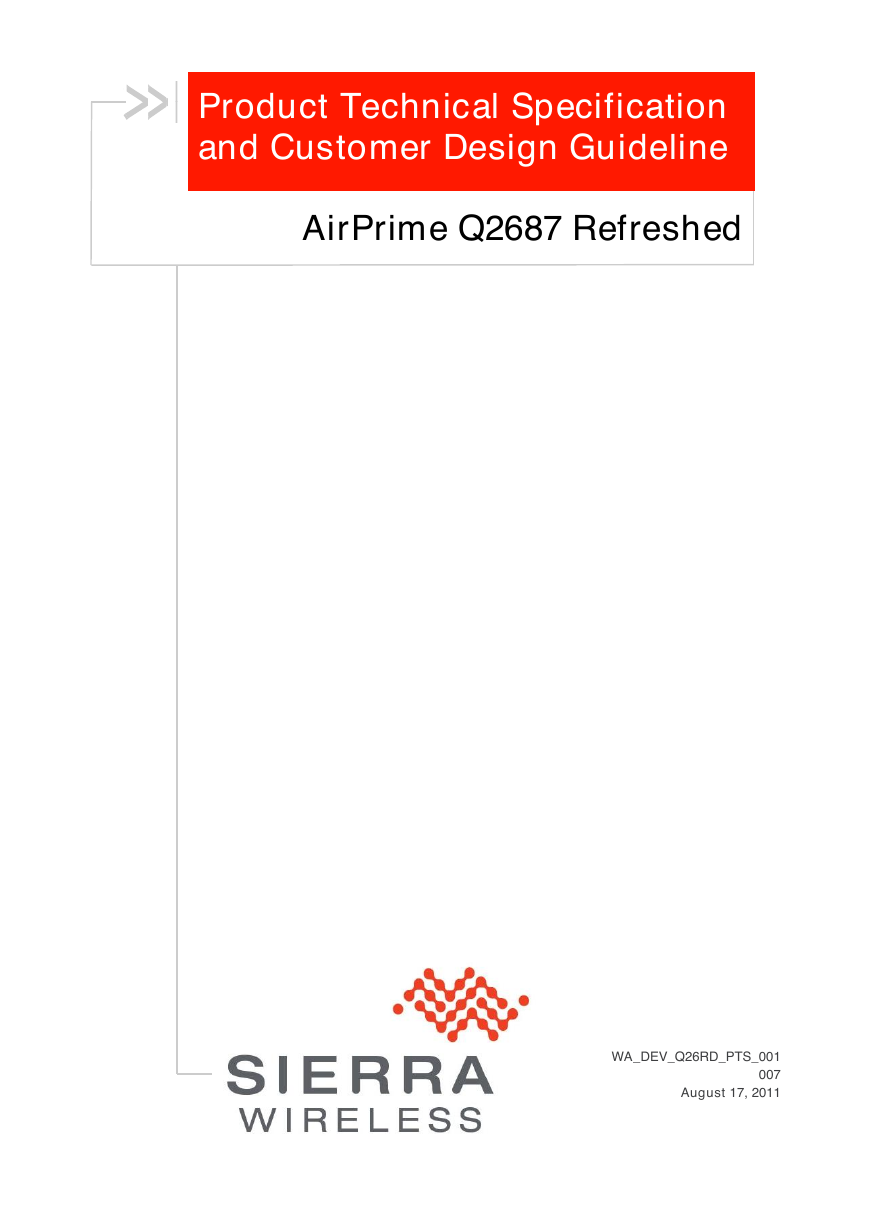
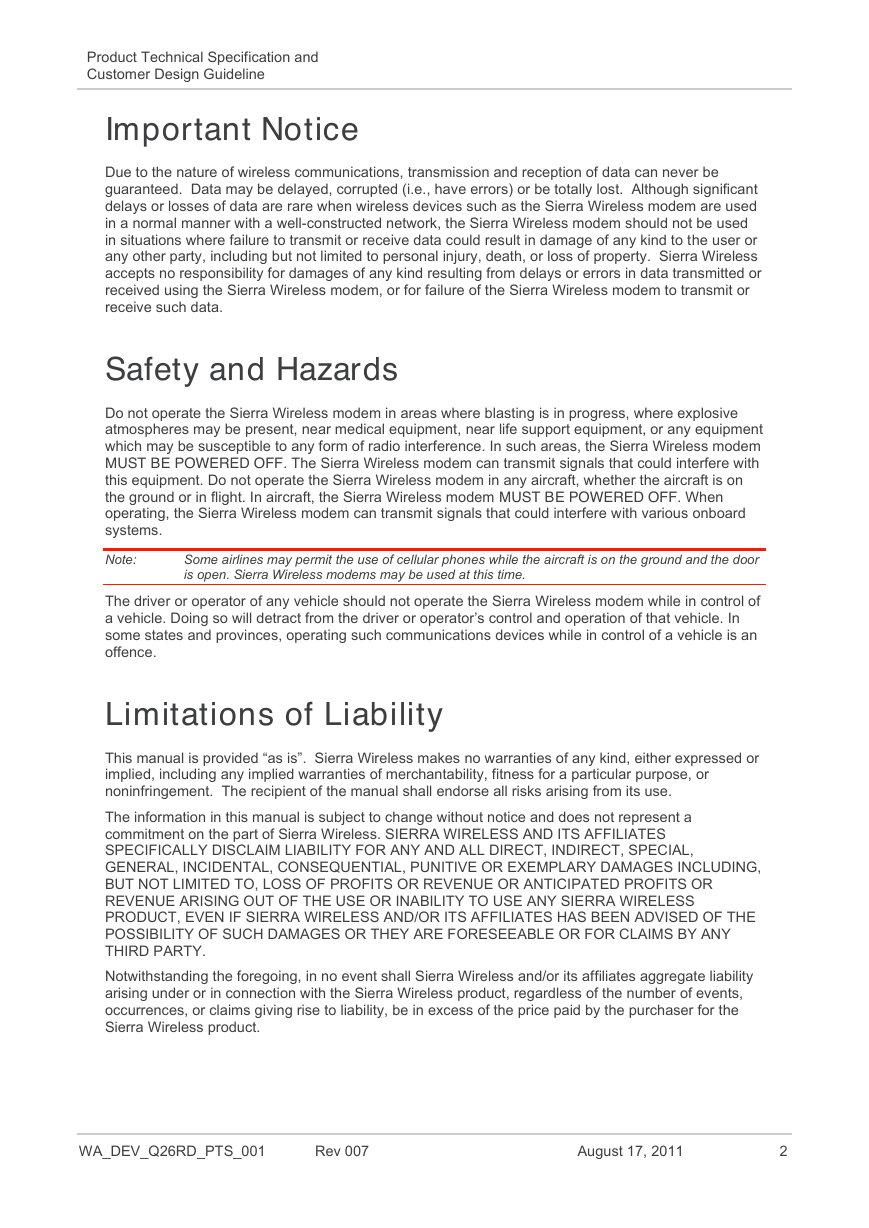
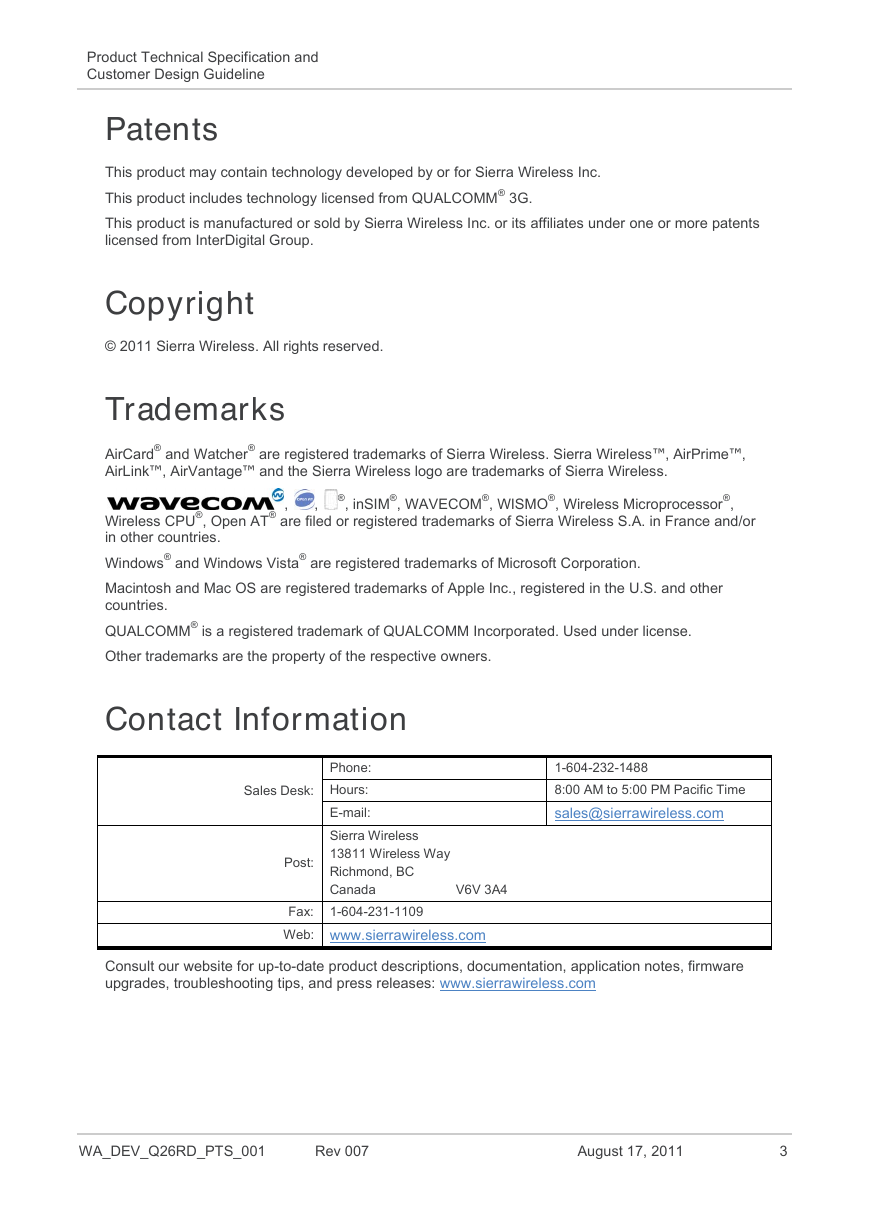
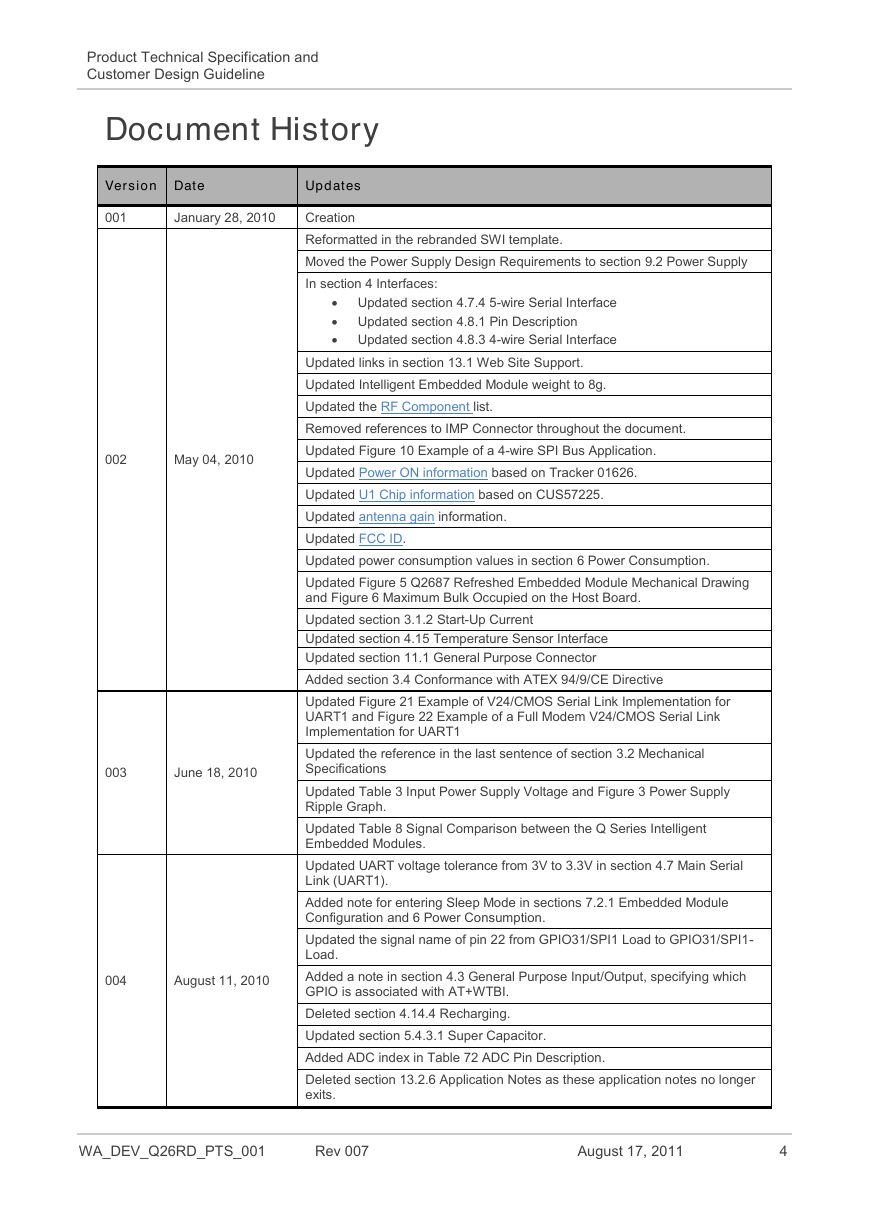

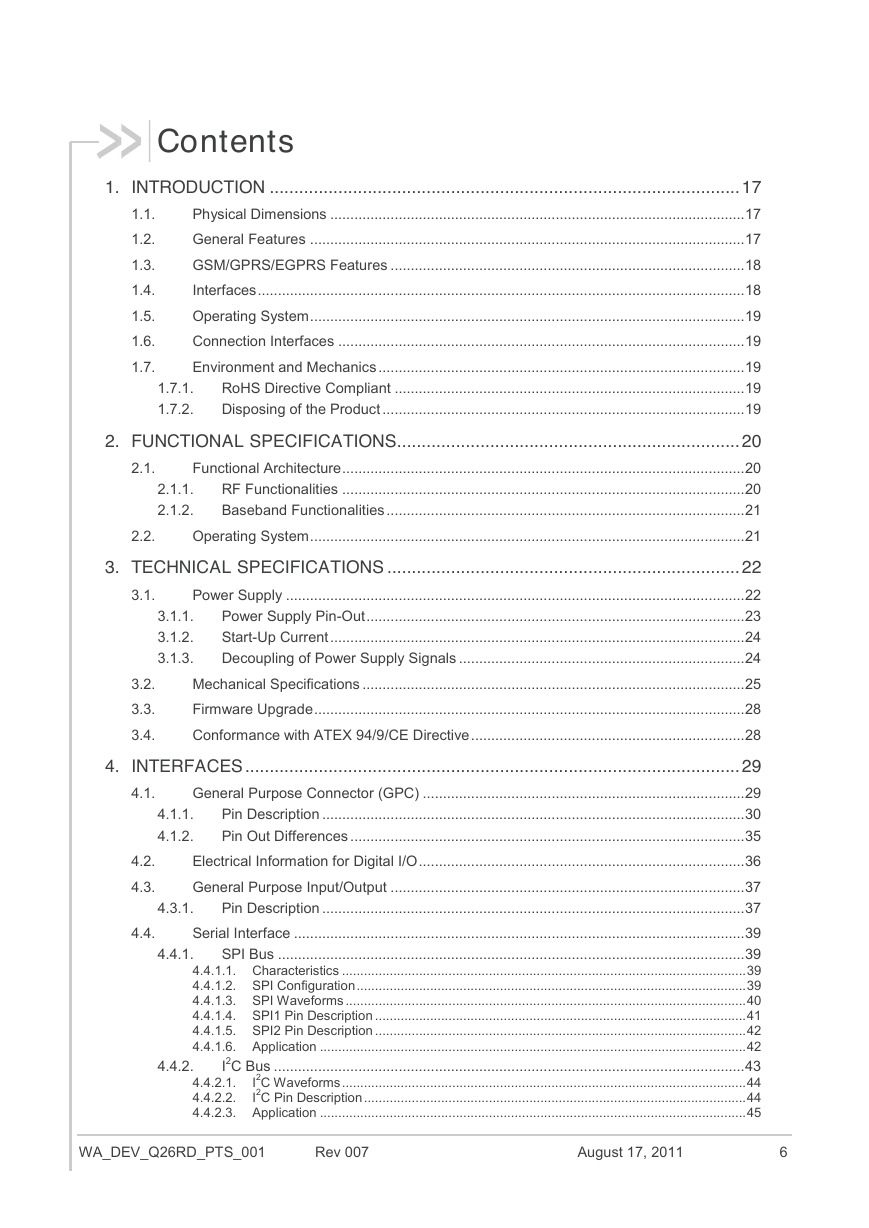
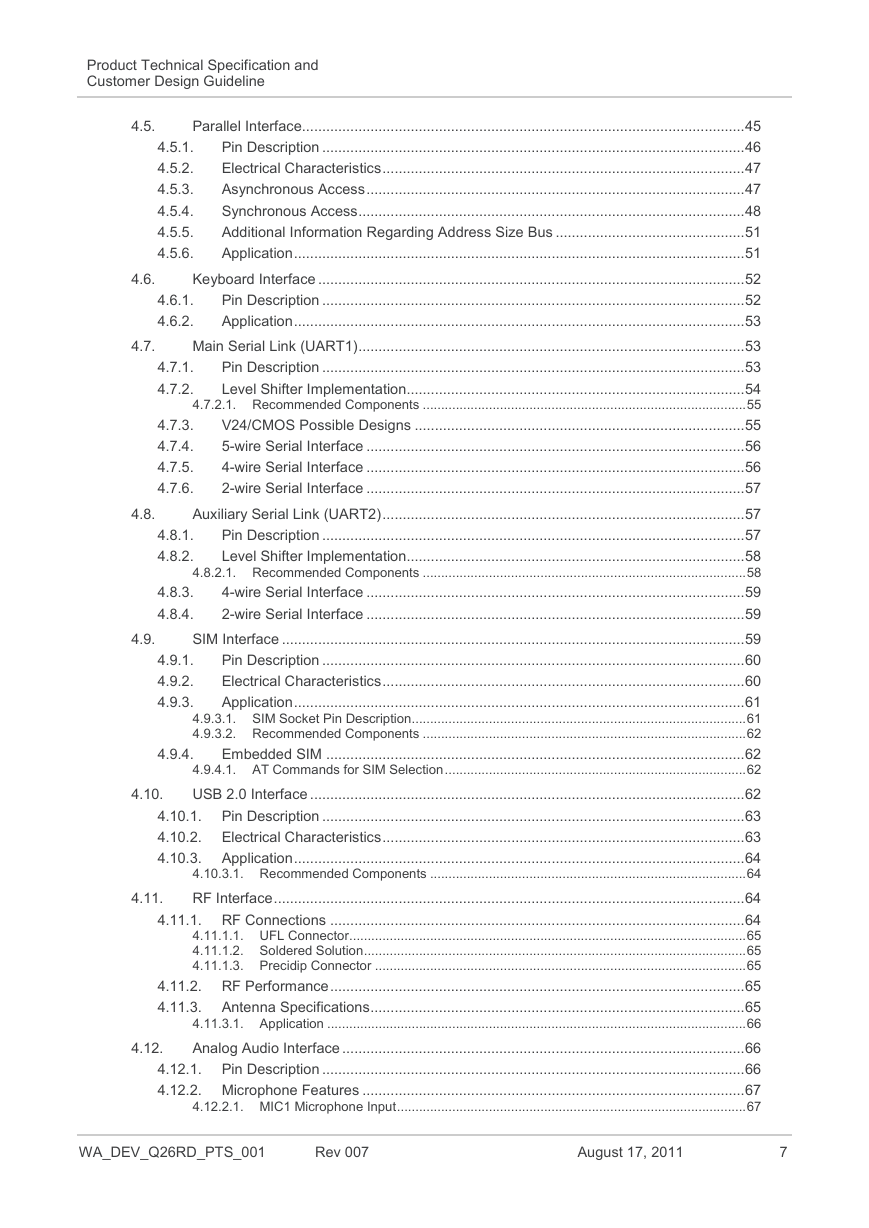
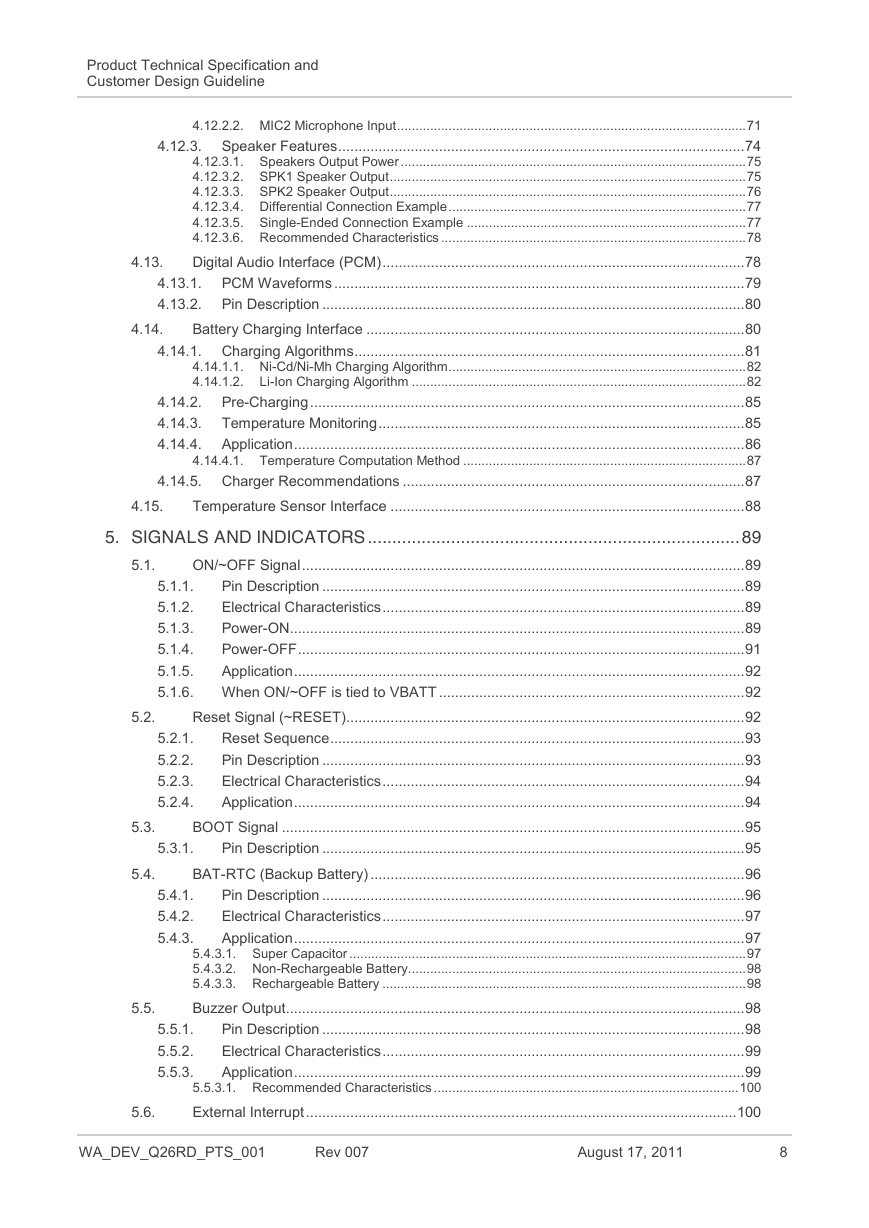








 2023年江西萍乡中考道德与法治真题及答案.doc
2023年江西萍乡中考道德与法治真题及答案.doc 2012年重庆南川中考生物真题及答案.doc
2012年重庆南川中考生物真题及答案.doc 2013年江西师范大学地理学综合及文艺理论基础考研真题.doc
2013年江西师范大学地理学综合及文艺理论基础考研真题.doc 2020年四川甘孜小升初语文真题及答案I卷.doc
2020年四川甘孜小升初语文真题及答案I卷.doc 2020年注册岩土工程师专业基础考试真题及答案.doc
2020年注册岩土工程师专业基础考试真题及答案.doc 2023-2024学年福建省厦门市九年级上学期数学月考试题及答案.doc
2023-2024学年福建省厦门市九年级上学期数学月考试题及答案.doc 2021-2022学年辽宁省沈阳市大东区九年级上学期语文期末试题及答案.doc
2021-2022学年辽宁省沈阳市大东区九年级上学期语文期末试题及答案.doc 2022-2023学年北京东城区初三第一学期物理期末试卷及答案.doc
2022-2023学年北京东城区初三第一学期物理期末试卷及答案.doc 2018上半年江西教师资格初中地理学科知识与教学能力真题及答案.doc
2018上半年江西教师资格初中地理学科知识与教学能力真题及答案.doc 2012年河北国家公务员申论考试真题及答案-省级.doc
2012年河北国家公务员申论考试真题及答案-省级.doc 2020-2021学年江苏省扬州市江都区邵樊片九年级上学期数学第一次质量检测试题及答案.doc
2020-2021学年江苏省扬州市江都区邵樊片九年级上学期数学第一次质量检测试题及答案.doc 2022下半年黑龙江教师资格证中学综合素质真题及答案.doc
2022下半年黑龙江教师资格证中学综合素质真题及答案.doc